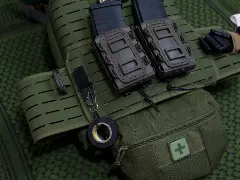

A skateboard is a flat board on 4 wheels, which is designed for skating, as well as performing acrobatic stunts and feints. It is often used as a vehicle for fast movement along city streets.
The first skateboards appeared in the United States in the 30s of the 20th century and were wooden platforms on casters. They were invented by Californian surfers who honed their skills on land. In the early 60s, the first factory skateboards appeared. Many baby boomers tried these out as kids.
The high consumer demand today for skateboards is due to a number of important advantages of these unique designs. Modern Evolve skateboards are an unusual vehicle on which you can not only perform various jumps but also take leisurely walks, as well as move around in a big city.
Due to the small size and lightweight of the skate, you can go down in the subway, use all types of ground transport, and also take it with you to shopping centers and cinemas.
Due to the fact that the skateboards are constantly under the supervision of the owners, the likelihood of their theft is minimal. Regular skateboarding develops well the muscles of the legs, back and allows you to always be in great physical shape.
Modern types:
Old school
The nose of the platform is pointed and the back part is blunt. Thanks to this shape, the structure is very stable and suitable for basic tricks.
Freestyle
The deck is well-shaped, with the wheels positioned closer to the center of the deck.
Newschool
Contemporary models with an oval base and curved ends. They are versatile, as they allow you to quickly move along the street and perform acrobatic elements.
Freeboard
Weighted version with 6 rollers, designed for snowboard aficionados.
Longboard
Elongated design. High speed is achieved due to weight and large diameter rollers.
Waveboard
The foot platform consists of 2 platforms connected by a spring. It has only 2 casters that can be rotated independently of the base.
The models are designed for driving on asphalt roads and ramps.
Design features
Any skateboard model consists of a deck, suspension, and wheels with bearings. Every detail affects functionality:
- Skateboards are mostly made from plywood, but some manufacturers use plastic or other synthetic materials. The surface is covered with an adhesive tape resembling sandpaper. Griptail prevents the athlete's feet from sliding.
- Metal hangers are located under the deck and serve as a mount for the wheels. To reduce the load, additional pads are installed between them and the board.
- Rollers vary in size and density.
- Bearings are installed in special grooves on rollers. It depends on them how quickly the athlete can pick up speed.
Professionals pay great attention to the selection of a sports instrument. Often they independently select parts by size. It is difficult for beginners to determine the characteristics of each component, so it is better for them to purchase a ready-made model.
How to choose a skateboard?
When choosing a skate, you need to take into account the height and width of the athlete's foot. Inventory manufacturers offer tables that correlate these parameters and the size of the deck. For normal riding, boards with a width of 20-20.5 cm are suitable, and for performing feints, narrower models are needed. When choosing rollers, you need to know that the larger their diameter, the faster the skateboard picks up speed and rolls better. Models with small rollers accelerate slowly but are more agile. These samples are designed to perform complex tricks and jumps. Roller stiffness is a measure of their resistance during mechanical action. Each video has its own markings, which are represented by a number and a letter. Moreover, the larger the numerical value, the harder the wheel. The choice of suspension depends on the task at hand. So, parts made of light metals make it easier to perform acrobatic elements. But it must be borne in mind that such metal is quite fragile. It is better for a beginner skater to prefer soft rollers since they do not allow gaining high speed. The optimal diameter for street-style athletes is 50-55 cm. For riding on ramps, rollers 50-55 cm in size are needed. Suspensions (in a professional environment - tracks) are a simple structure by means of which the rollers are attached to the board. The tracks are responsible for the maneuverability of the skate and the safety of the cornering. The principle of operation of the suspensions is quite simple and consists of the following: with lateral pressure on the deck, they make the wheels turn in one direction or another, and when the center of gravity is aligned, they return them to their original position. The dimensions of the tracks are chosen based on the width of the deck so that the wheels fixed on the hanger do not protrude beyond the deck.








Comments
Post a Comment